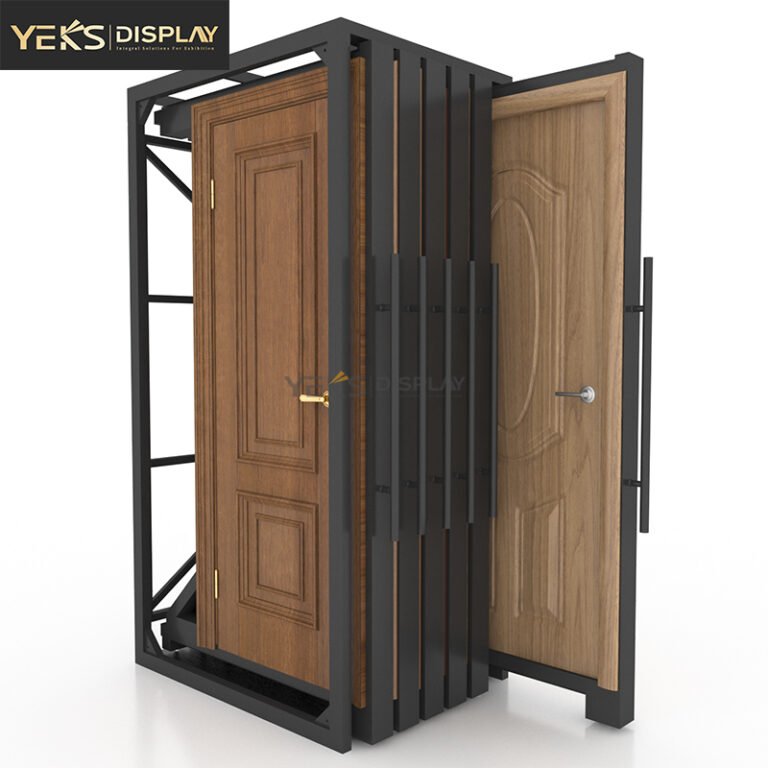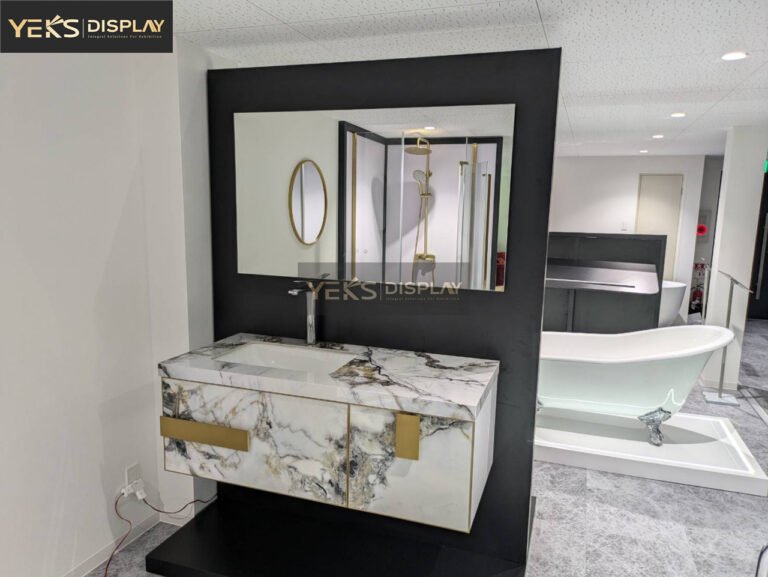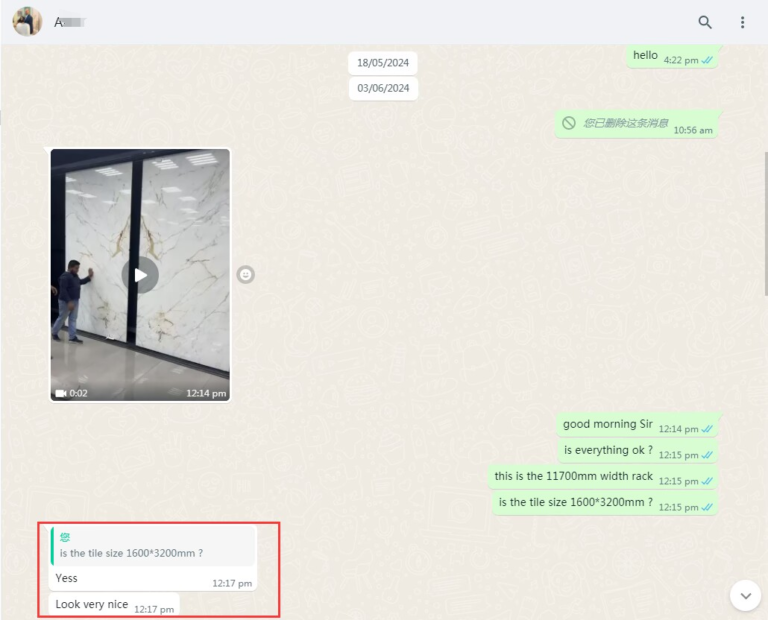Carpet display racks serve as powerful merchandising tools that drive sales and create an immersive shopping experience for customers. According to a study published in the Journal of Marketing, well-designed displays can increase sales by up to an astounding 540% when compared to unorganized product layouts.
By presenting carpets attractively and accessibly, display racks allow customers to easily view and compare samples, taking in the full pattern and texture. This organized approach keeps inventory protected while showcasing more options, making the most of your available floor space. A tidy, professional showroom with eye-catching displays creates a welcoming environment that encourages customers to linger and explore.

Benefits of Carpet Display Racks
Carpet display racks offer numerous advantages for retailers looking to create an inviting and effective showroom experience. Firstly, they allow carpets to be presented in an attractive and accessible manner, making it easy for customers to view full patterns and textures. As noted by Furniture World, a well-designed display “creates a compelling buying experience” by showcasing products in an appealing way.
Additionally, racks help keep inventory organized and protected from wear and tear. With samples neatly stored on shelves or hung vertically, carpets remain in pristine condition for customers to evaluate. This level of organization not only looks professional but also streamlines the sales process.
Perhaps most importantly, display racks maximize valuable floor space by allowing retailers to showcase a wider variety of carpet samples in the same area. Great Northern Instore notes that effective product displays “improve the shopper experience” by making it easier to browse and compare options. With more samples on display, customers have a greater selection to choose from, increasing the likelihood of making a sale.

Types of Carpet Display Racks
Carpet retailers have several options when it comes to display racks for showcasing their inventory. The most common types include:
• Fixed racks with flat samples: These racks feature horizontal shelves or platforms where carpet samples can be laid out flat, allowing customers to easily view the full pattern and texture. They are a simple and space-efficient option. Pinterest
• Slanted racks: Similar to fixed racks, but with the shelves angled slightly to better display the carpet samples. This elevated presentation makes it easier for customers to see the samples from multiple angles.
• Rotating/spinning racks: These circular racks rotate to provide a 360-degree view of the carpet samples. They are great for smaller spaces as customers can spin the rack to access all sides. Pinterest
• Vertical racks for hanging samples: Designed to showcase longer carpet runners or room-sized samples. The vertical orientation allows the full length of the carpet to be displayed.
• Customizable racks: Many manufacturers offer modular or customizable racks that can be configured to meet the specific needs of a showroom. Adjustable shelves, hanging arms, and mobility options provide flexibility.

Key Features to Look For
When selecting carpet display racks, prioritize durable construction materials like heavy-duty steel or aluminum. As noted by Tier-Rack, these racks need to withstand the substantial weight of carpet rolls and samples. Look for adjustable shelves and arms that allow you to customize the configuration to fit your inventory and space. Mobility is also essential, so opt for racks with smooth-rolling casters or wheels.
Pay close attention to the size and weight capacity specifications to ensure the racks can accommodate your carpet rolls, even at maximum capacity. Finish and color options let you coordinate the racks with your showroom’s aesthetic. Some manufacturers, like Rack&Shelf, offer customizable carpet racks tailored to your exact needs in terms of dimensions, shelving, and accessories.
Maximize Your Display Area
To make the most of your showroom floor space, arrange carpet display racks strategically to create visually appealing “carpet vignettes.” Group samples by color family, style, or fiber type to help customers easily navigate your selection. As recommended by Clover, utilize clear signage to further organize your displays and guide shoppers through the different carpet categories.
Maintain wide aisles between racks to allow for comfortable browsing and easy access to all sides of the displays. Complement your carpet samples with accessories like rug pads and informative product cards to provide a comprehensive shopping experience. Don’t forget to take advantage of vertical space by incorporating hanging racks to showcase long carpet runners or samples.
Creative Merchandising Tips
To make your carpet displays truly captivating, get creative with your merchandising techniques. One eye-catching approach is to drape and layer carpet samples over the racks for a textured, dimensional look. As described by Shopify, “Layering textures and materials adds depth and interest to a display.” You can also pair carpet samples with decorative pillows, furniture pieces, or other home accents to create inspirational vignettes that help customers envision the carpet in their own living spaces.
Another way to draw attention is by curating themed displays around colors, patterns, room styles, or even seasons. Use bold accents like rope lighting or creative signage to highlight these thematic groupings. As KSF Global recommends, “Use lighting to draw attention to key products or messaging.” Regularly refresh your displays to coincide with promotions, new product launches, or changing seasons to keep your showroom looking fresh and exciting.
Assessing Your Available Space and Carpet Inventory
Before selecting carpet display racks, take stock of your showroom’s dimensions and layout. Measure the available floor area and note any architectural features or obstructions that could impact rack placement. Additionally, evaluate your current carpet inventory and consider how many samples you need to showcase simultaneously. This assessment will help determine the ideal rack size, configuration, and quantity required to create an organized and visually appealing display.
As noted in the Consumer Reports flooring buying guide, carpets come in various styles, textures, and patterns, so having an organized system to present your diverse offerings is crucial for customers to make informed decisions.
Maintaining Your Carpet Display Racks
Proper maintenance is key to keeping your carpet display racks looking their best and functioning properly for years to come. Follow these tips:
For cleaning, the Wenger Corporation recommends using a mild, non-abrasive soap with warm water and a soft cotton cloth. Avoid harsh chemicals or abrasives that could damage the rack’s finish.
Check regularly for loose carpet samples and secure them tightly to the racks. Allowing samples to hang loosely can cause fraying over time. Replace any worn or damaged samples promptly.
When moving or rearranging racks, handle them with care. According to GSA maintenance guidelines, check for loose connections, leaks, or damage after moving heavy equipment like display racks.
Inspect racks periodically and replace any worn or broken components like casters, shelves, or hanging arms. This will ensure racks remain stable, mobile, and functional.

Creative Merchandising Tips
Effective carpet displays go beyond merely showcasing product samples—they tell a compelling design story and guide customers through the shopping journey. By creatively merchandising your carpet racks, you can inspire shoppers and encourage interaction with your products.
One powerful approach is to create themed vignettes that pair carpet samples with complementary furniture pieces, decorative pillows, and accessories. This allows customers to envision how the carpets might look in their own homes. As noted by McKinsey, personalized and immersive retail experiences drive higher customer satisfaction.
You can also use signage, lighting, and other visual cues to highlight specific collections or design trends. For example, accent certain racks with rope lighting or bold signage to draw attention to promotional items or seasonal offerings. This not only adds visual interest but also provides valuable product information and expertise to guide customers.
Finally, encourage hands-on interaction by draping carpet samples over racks or arranging them in layered, textural displays. This tactile approach allows shoppers to get a true sense of the carpet’s pile, pattern, and overall look and feel—a crucial element of the customer experience, according to PwC.
Factoring Rack Costs into Merchandising Budgets
When investing in carpet display racks, it’s essential to consider both the upfront costs and the long-term return on investment (ROI). Quality racks can be a significant expense, but they also provide immense value by creating an organized, visually appealing showroom that enhances the customer experience and boosts sales.
Retailers should factor rack costs into their overall merchandising budgets, considering options at various investment levels. For those with limited funds, more affordable rug racks for sale can be found, although these may not offer the same durability or customization as higher-end models. Alternatively, financing or rental options from reputable display rack suppliers can make premium racks more accessible.
Ultimately, an organized showroom with well-designed carpet displays can pay for itself many times over by improving the shopping experience, increasing sales, and creating a professional, inviting environment that keeps customers coming back.




